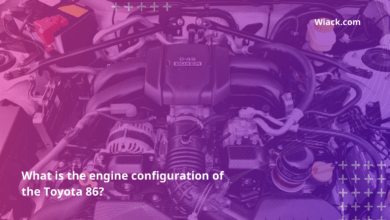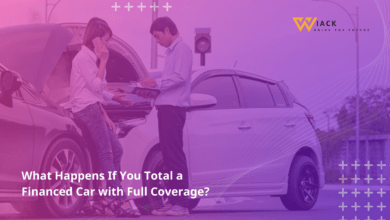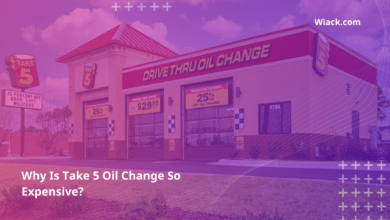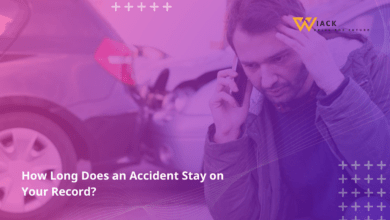How Do I Know If I Have Gap Insurance?
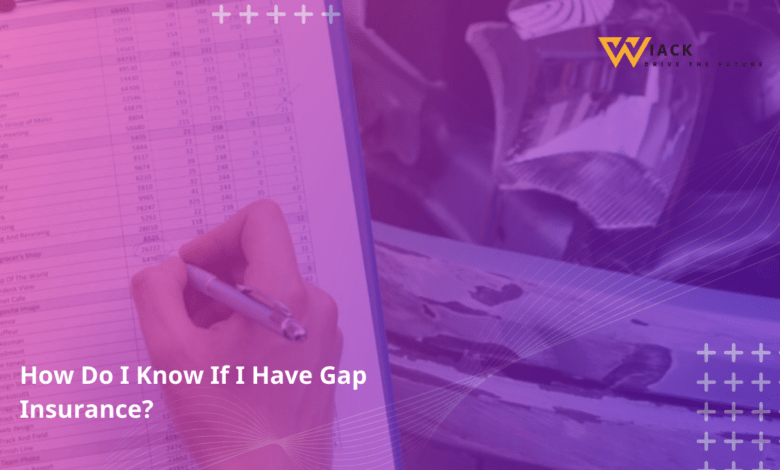
Did you know that in 2023, nearly 800,000 vehicles were declared as write-offs in the UK alone? This staggering statistic highlights the importance of understanding your car insurance coverage, especially when it comes to gap insurance. Whether you’re a new car owner or simply reviewing your existing policy, knowing if you have gap insurance can save you from potential financial stress in the event of a total loss. In this comprehensive guide, we’ll explore how to determine if you have gap insurance and why it matters.
Understand Gap Insurance
Before we dive into how to check if you have gap insurance, it’s crucial to understand what it is and why it’s important. This knowledge will help you make informed decisions about your car insurance coverage.
What is Gap Insurance?
Gap insurance, which stands for Guaranteed Asset Protection insurance, is a specialized type of auto insurance coverage. It’s designed to bridge the “gap” between what you owe on your car loan or lease and the actual cash value (ACV) of your vehicle if it’s totaled or stolen.
Here’s a simple breakdown:
- Your car’s value: $20,000
- Amount you owe on your loan: $25,000
- The “gap”: $5,000
In this scenario, if your car is totaled, your regular auto insurance would typically only pay out the current value of the car ($20,000). Gap insurance would cover the remaining $5,000, ensuring you’re not left owing money on a car you no longer have.
Why is Gap Insurance Important?
Gap insurance provides crucial financial protection in several scenarios:
- Rapid depreciation: New cars can lose up to 20% of their value in the first year. Gap insurance protects you from this steep initial depreciation.
- Long-term loans: If you have a loan term longer than 60 months, you’re more likely to be “upside down” on your loan (owing more than the car is worth) for a longer period.
- Low down payment: If you made a small down payment (less than 20%), you’re more likely to owe more than the car is worth in the early years of ownership.
- Leased vehicles: Many leases require gap insurance to protect the leasing company’s asset.
Understanding the importance of gap insurance can help you make an informed decision about whether you need this coverage.
Who Needs Gap Insurance?
While gap insurance can be beneficial, it’s not necessary for everyone. You might consider gap insurance if:
- You’ve financed a new car with a loan term longer than 60 months
- You’ve made a down payment of less than 20%
- You’re leasing a vehicle (many leases require it)
- You’ve purchased a vehicle that depreciates quickly
- You drive more than 15,000 miles per year (which accelerates depreciation)
On the other hand, you probably don’t need gap insurance if:
- You paid cash for your vehicle
- You made a large down payment (20% or more)
- Your loan term is 60 months or less
- You own your car outright
Understanding your specific situation will help you determine if gap insurance is right for you.
Check Your Current Auto Insurance Policy
Now that we understand what gap insurance is and why it’s important, let’s explore how to check if you already have this coverage. The first place to look is your current auto insurance policy.
Review Your Policy Documents
Your insurance policy documents contain a wealth of information about your coverage. Here’s how to review them effectively:
- Locate your policy documents: These might be physical papers or digital files, depending on how you receive your insurance information.
- Find the declarations page: This is usually the first page of your policy and provides a summary of your coverage.
- Look for gap coverage: It might be listed as “gap insurance,” “loan/lease coverage,” or “guaranteed auto protection.”
- Check the coverage details: If you find gap insurance listed, review the specifics of the coverage, including any limits or exclusions.
Remember, not all policies include gap insurance as standard coverage. If you don’t see it listed, you likely don’t have it.
Contact Your Insurance Agent
If you’re unsure about your policy details or can’t find your documents, contacting your insurance agent is a great option. They can:
- Confirm whether you have gap insurance
- Explain the details of your coverage
- Advise you on whether gap insurance is recommended for your situation
- Provide a quote for adding gap insurance if you don’t already have it
Don’t hesitate to ask questions. Your insurance agent is there to help you understand your coverage and make informed decisions.
Use Online Account Access
Many insurance companies offer online portals where you can view and manage your policy. To use this method:
- Log in to your insurance company’s website or mobile app
- Navigate to your policy details or coverage summary
- Look for gap insurance or loan/lease coverage in your list of coverages
- If available, review the details of the coverage
Online access can be a quick and convenient way to check your coverage at any time.
Check Your Loan or Lease Agreement
If you don’t find gap insurance in your auto insurance policy, the next place to look is your loan or lease agreement. Some lenders or leasing companies include gap coverage in their contracts.
Review Your Loan or Lease Documents
To check your loan or lease agreement for gap insurance:
- Locate your loan or lease contract
- Look for sections titled “insurance requirements” or “gap coverage”
- Read carefully to see if gap insurance is included or required
- Check for any details about the coverage, such as limits or conditions
If gap insurance is included in your loan or lease, make sure you understand who provides the coverage and how to file a claim if needed.
Contact Your Lender or Leasing Company
If you can’t find your documents or are unsure about the terms, contact your lender or leasing company directly. They can:
- Confirm if gap insurance is included in your agreement
- Explain the details of the coverage
- Provide information on how to file a claim if necessary
Remember to have your account information ready when you call to expedite the process.
Contact Your Insurance Provider
If you’re still unsure about whether you have gap insurance after checking your policy and loan documents, reaching out to your insurance provider directly is a reliable way to get accurate information.
Call Your Insurance Provider Directly
Calling your insurance company’s customer service line is often the quickest way to get definitive answers about your coverage. Here’s what to do:
- Find your insurance company’s customer service number (usually on your insurance card or their website)
- Have your policy number ready
- Ask specifically about gap insurance coverage on your policy
- If you don’t have it, ask about the cost to add it
During the call, don’t hesitate to ask for clarification on any terms or details you don’t understand. It’s important that you have a clear picture of your coverage.
Check Your Insurance Company’s Website
Many insurance providers offer detailed information about their coverage options on their websites. To use this resource:
- Visit your insurance company’s official website
- Look for a section on “Types of Coverage” or “Policy Details”
- Search for information on gap insurance or loan/lease coverage
- Use any online chat features to ask specific questions about your policy
While website information can be helpful, remember that it may not reflect your specific policy. Always confirm details with a representative if you’re unsure.
Other Resources
Sometimes, you might need additional help or information to determine if you have gap insurance or if you need it. Here are some other resources you can use.
Consult a Financial Advisor
A financial advisor can provide valuable insights into your overall financial picture and help you determine if gap insurance is a wise investment for you. They can:
- Analyze your car loan or lease in the context of your broader financial situation
- Help you understand the potential risks of not having gap insurance
- Advise on whether the cost of gap insurance is justified in your case
Remember, while financial advisors can offer valuable guidance, the final decision about insurance coverage is yours to make.
Use Online Tools and Calculators
Several websites offer tools and calculators to help you determine if you need gap insurance. These tools typically ask for information such as:
- Your car’s current value
- The amount you owe on your loan or lease
- Your loan term and interest rate
Based on this information, they can estimate whether you’re at risk of owing more than your car is worth and might benefit from gap insurance.
While these tools can be helpful, they should be used as a guide rather than a definitive answer. Always verify the results with your insurance provider or financial advisor.
Understanding Your Coverage
Once you’ve determined whether or not you have gap insurance, it’s important to understand the specifics of your coverage. This knowledge will help you make informed decisions about your insurance needs.
Types of Gap Insurance
There are several types of gap insurance, each with its own features:
- Standard Gap Insurance: Covers the difference between your car’s actual cash value and the amount you owe on your loan or lease.
- Return to Invoice Gap Insurance: Pays the difference between your insurance payout and the original invoice price of your vehicle.
- Vehicle Replacement Gap Insurance: Covers the cost of replacing your car with a new model of the same make and specification.
- Finance Gap Insurance: Specifically designed for financed vehicles, covering the difference between the insurance payout and the outstanding finance amount.
Understanding which type of gap insurance you have (or need) is crucial for ensuring you have the right coverage for your situation.
Coverage Limits and Exclusions
Like all insurance policies, gap insurance has its limits and exclusions. Common exclusions might include:
- Overdue loan or lease payments
- Extended warranties added to your loan or lease
- Carry-over balances from previous loans or leases
- Certain types of vehicles (e.g., some commercial vehicles)
It’s important to read your policy carefully and understand what is and isn’t covered. If you’re unsure, don’t hesitate to ask your insurance provider for clarification.
Cost of Gap Insurance
The cost of gap insurance can vary widely depending on factors such as:
- The value of your vehicle
- The amount of your loan or lease
- Your location
- The insurance provider
On average, gap insurance might cost between $20 to $40 per year when added to your existing auto insurance policy. If purchased from a dealership, it could cost several hundred dollars as a one-time fee.
Always compare prices from different providers to ensure you’re getting the best deal. Remember, the cheapest option isn’t always the best – consider the coverage limits and the reputation of the provider as well.
Additional Considerations
As we wrap up our comprehensive guide on how to know if you have gap insurance, let’s explore some additional considerations that can help you make the most informed decision about your coverage.
Gap Insurance and Total Loss
Understanding how gap insurance works in the event of a total loss is crucial. Here’s a step-by-step breakdown:
- Your car is declared a total loss (e.g., due to an accident or theft).
- Your regular auto insurance pays out the actual cash value of your car.
- If this amount is less than what you owe on your loan or lease, gap insurance covers the difference.
For example:
- You owe $20,000 on your car loan
- Your car is totaled and valued at $15,000
- Your auto insurance pays $15,000
- Gap insurance would cover the remaining $5,000
This process ensures you’re not left owing money on a car you no longer have.
Gap Insurance and Used Cars
While gap insurance is often associated with new cars, it can also be valuable for used cars in certain situations:
- If you’ve financed a used car with a long-term loan
- If you’ve made a small down payment on a used car
- If you’ve purchased a used car that depreciates quickly
However, gap insurance may be less necessary for used cars that have already experienced significant depreciation. Always evaluate your specific situation to determine if gap insurance is worth it for your used car.
Gap Insurance and Refinancing
If you refinance your car loan, it’s important to reassess your gap insurance needs:
- Your new loan amount may be different from your original loan.
- The term of your new loan may affect how long you’re “upside down” on your loan.
- Your existing gap insurance policy may not transfer to your new loan.
After refinancing, contact your insurance provider to update your coverage and ensure you’re still adequately protected.
In conclusion, knowing whether you have gap insurance is crucial for protecting your financial interests in the event of a total loss. By following the steps outlined in this guide – checking your auto insurance policy, reviewing your loan or lease agreement, contacting your insurance provider, and utilizing additional resources – you can confidently answer the question, “How do I know if I have gap insurance?”
Remember, your insurance needs may change over time, so it’s a good idea to review your coverage regularly. Whether you decide gap insurance is right for you or not, being informed about your options empowers you to make the best decision for your unique situation. Stay protected, stay informed, and drive with confidence knowing you’ve taken the time to understand your insurance coverage.
Get the latest car news, reviews, and prices at Wiack.com. Your one-stop destination for all things automotive.

